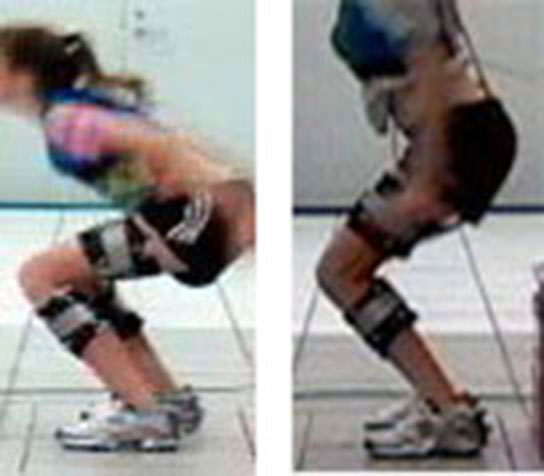Blog
Improving Shock Absorption after ACL Reconstruction: Protecting Against Future Arthritis?
ACL injury is a common sports injury. It has been well documented that persons who have undergone ACL reconstruction have a higher risk of developing knee osteoarthritis. It is thought that poor recovery of hip and knee muscle strength and/or poor movement mechanics post ACL-reconstruction, may in part, contribute to the accelerated progression of knee osteoarthritis in this population.
The body has 2 types of shock absorbing systems: the passive system and active system. The passive shock absorbers are the viscoelastic properties of cartilage and bone, while the active shock absorbers are the eccentric action of muscles. In theory, the more one uses the active shock absorbers (i.e. the hip and knee extensors), the less reliance on the passive shock absorbers (i.e. stress on bone and cartilage of the knee joint).
In a recent paper published in the American Journal of Sports Medicine, we demonstrated that improving active shock absorption by increasing hip and knee flexion during a single leg landing task resulted in a decrease in knee joint compressive forces. On average, knee compressive forces decreased by 61% of bodyweight (81 lbs) when subjects were instructed to land more softly (i.e. bend more at the hip and knee) when jumping off a 10 inch platform. These findings suggest that teaching patients to land with greater hip and knee flexion decreases knee joint loading and may prevent or delay the development of knee arthritis in persons who have undergone ACL reconstruction.
Evaluation of shock absorption capability is an important part of the Return to Sport Test at MPI. Using high speed cameras, we evaluate a patient’s ability for active shock absorption during sport specific tasks (i.e. jumping/landing and cutting). In turn, teaching patients to improve active shock absorption is a critical component of our Return to Sport Training program. Using force plates and cameras, we can provide instant feedback to patients regarding their landing performance thereby facilitating the process of motor learning (i.e. muscle memory). By improving use of the hip and knee muscles during sport specific tasks, we seek to minimize the potential for knee pain and arthritis following ACL reconstruction (see example below).



